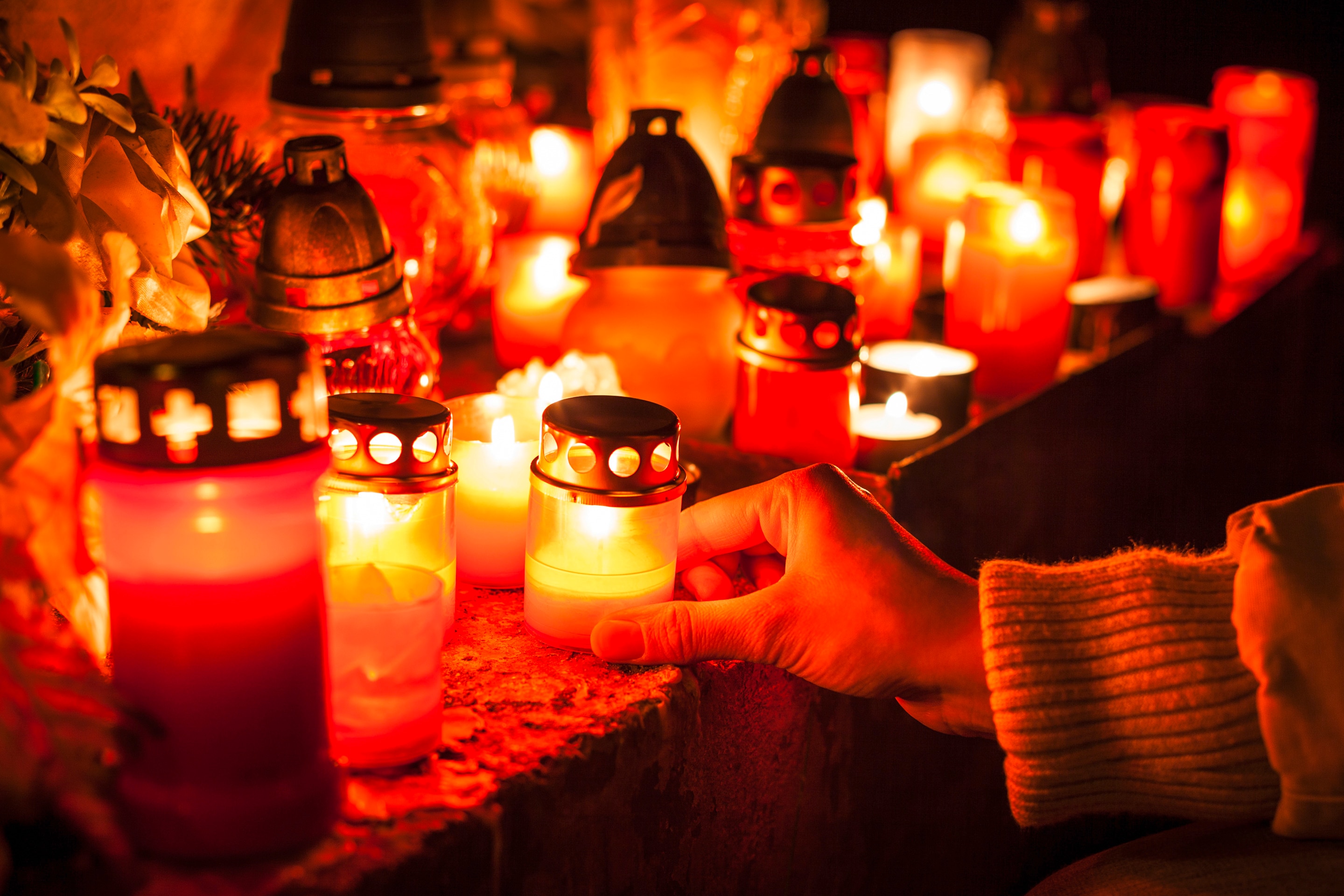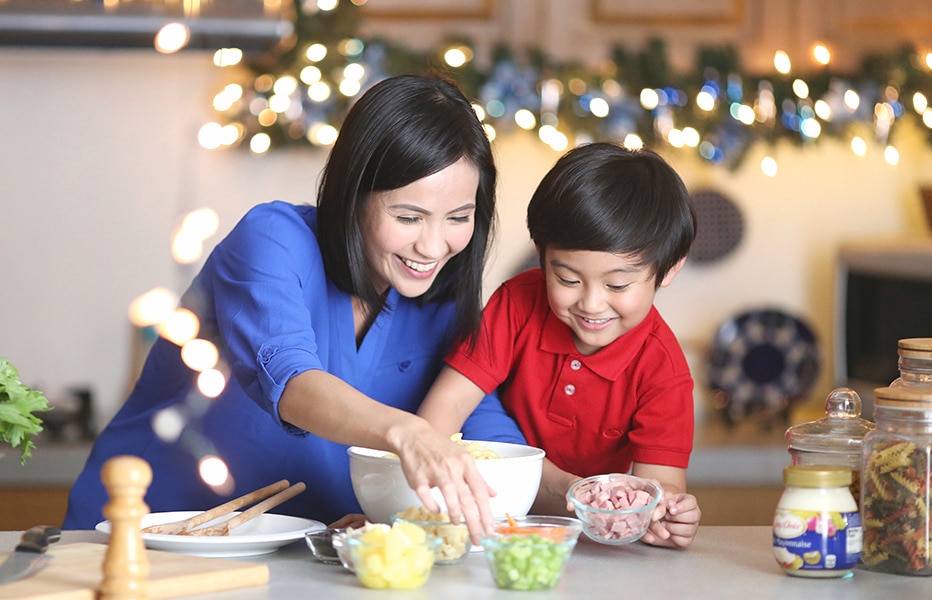6 All Saints' Day Traditions Kids Should Know About
Share to facebook Opens in new window
The last quarter of the year means cooler temperatures, earlier sunsets, and longer nights. And with it begins the countdown for Christmas. But before you get to hear Jose Mari Chan’s yuletide serenade, there are several essential holidays Filipinos celebrate first. One of them is All Saints’ Day, followed immediately by All Souls’ Day. For many kids and tired adults, this time of the year is collectively known as either sembreak, Undas, or Araw ng mga Patay.
Despite being viewed as an opportunity to take a quick vacation, the three- or four-day break has ties to religious practices and traditions. Remember how to celebrate All Saint’s Day and All Souls’ Day, and make sure to get your kids involved.
The Difference Between All Saints’ Day and All Souls’ Day

You can’t talk about All Saints’ without mentioning All Souls’ Day and Undas. But do you know how they differ? Read on to keep yourself from getting confused or interchanging these holidays.
All Saint’s Day
Todos Los Santos, Feast of All Saints, All Hallows' Day, or Hallowmas are different ways to call this day. It is a Catholic holy day meant to honor all the saints and martyrs of the church. A public holiday in many nations, the celebration falls every November 1.
All Souls’ Day
All Souls’ Day or Araw ng Kaluluwa on November 2 commemorates the deceased. The holiday is set aside for the living to offer prayers, alms, and graveyard visits to loved ones and souls in purgatory.
Undas
Undas refers to the entire celebration from October 31 to November 2. There is still debate on the origins of the term “Undas” or sometimes “Undras.” Many believe it is from “honrar” in “honras fúnebres” meaning funeral honors. It’s hypothesized that Undras resulted from the rampant mispronunciation of Spanish in the past. The corruption of the word stuck and is now interchangeable with Araw ng mga Patay.
Undas Traditions to Teach Kids
Now that the definitions are clearer, it's time to move on to traditions Pinoys practice during Undas. Here are the customs you can teach your children.
Paying respects to the departed.

Every year, millions flock to cemeteries to pay respects to loved ones. It's not unusual to find families repainting or repairing headstones or structures days in advance. Some will brush and clean graves on the day of the visit. Families can then begin prayer vigils, wait until nightfall, or even stay overnight.
Bringing food to share is also part of this tradition. You can pack popular options: adobo, boiled corn, fruits, pasta, cookies, chips, and sandwiches. Make prep work easy by reaching for Lady's Choice Sandwich Spread. Use it on pandesal or as a dressing for chicken burgers. Since some people stay for hours, you must select baon items that won't go bad quickly.
Cemetery etiquette to remember:
- Stepping on grave markers is very disrespectful. Walk in between headstones and avoid standing on someone’s burial plot.
- Don’t litter! Always clean as you go.
- Leave pets at home. If you must bring them, keep them on a leash and dispose of their waste properly.
- The cemetery is not a place for loud music. Keep your voice low, and please leave your radio and karaoke machine at home.
- Keep kids in check. This means no running, yelling, or playing around. Teach them to be respectful and sympathetic to others.
- Avoid playing cards or board games. Bingo is a no-no!
Offering tokens to honor loved ones.

Aside from Valentine’s, Todos Los Santos means good business for flower shops and fruit stands. According to custom, gifting brings joy to the spirits. It is common for people to share small tokens with the dead. An older tradition known as atang is a practice of offering the deceased their favorite food and leaving it on their grave or in front of photos at home.
Lighting candles or incense.

Lighting memorial candles or incense sticks and offering an All Saints’ Day prayer in front of photographs is standard practice. It's an acceptable alternative for those unable to visit graveyards in distant locations. Typically, you can find photos on an altar table at home, where candles and food are left. Another option is to offer mass intentions in nearby parishes and churches.
Preparing a small feast.

People come from all over the country to visit cemeteries during Undas. Because of this, the somber event becomes an impromptu family reunion. And what is a Pinoy gathering without food? Sharing memories, anecdotes, and potluck food in honor of the deceased becomes the focal point of the handaan. But it doesn’t have to be extravagant or indulgent. A simple menu of the departed loved one’s favorite merienda will do.
Taking out-of-town trips.

Road trips are an opportunity to visit the graves of relatives in provinces. It's also a chance to spend time with family living in the area while enjoying a mini vacation. You might even witness local traditions like Sagada's panag-apoy if you find yourself in the Mountain Province. The sacred tradition does away with lighting candles. Instead, locals start wood bonfires over the graves of loved ones.
Dressing up and celebrating Halloween.

Wearing costumes to go trick-or-treating isn't a homegrown tradition. However, it has become a widely accepted practice. Once you’ve planned your Undas obligations, give your kids the chance to experience Halloween parties, costume contests, and candy collections. Better yet, you can dress them up as their favorite saint!
All Saints’ Day can be hectic, especially when visiting large public cemeteries. Avoid the pressure and tension by going days before or after the holiday. There are fewer crowds and more parking spaces when you come early. Plus, you can expect a quieter environment for commemoration and prayer. Make sure to plan a simple picnic with your family and pack classic sandwiches and salads for easy prep and transport.
Related Articles
- slide 1
- slide 2
- slide 3




